Continued from the three previous posts….
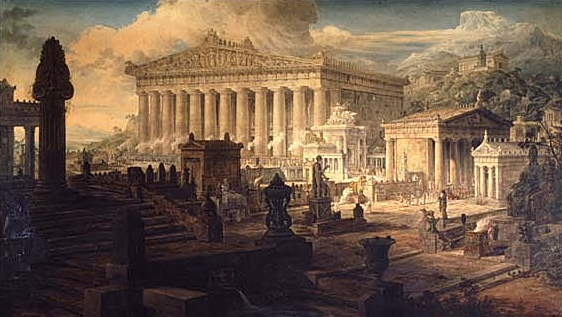
This painting by Joseph Gandy, British artist and visionary architect, gives us his idea of what the site at Eleusis might have looked like around 200CE at the beginnings of the end of the Roman Empire. The Temple of Demeter is that big building in the center. The Temple and its grounds had two propylaia, or massive entryways, at this time. The outer, newer one is the Great Propylaia, built around 150CE by either Emperor Hadrian or Marcus Aurelius or both. It’s that large, columned building/gate to the right. The tiny building to the far right is probably the Temple of Artemis.
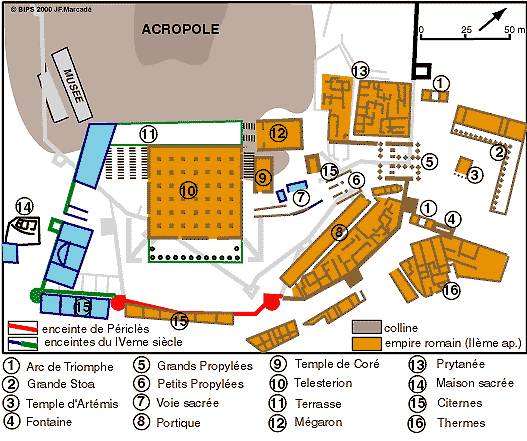
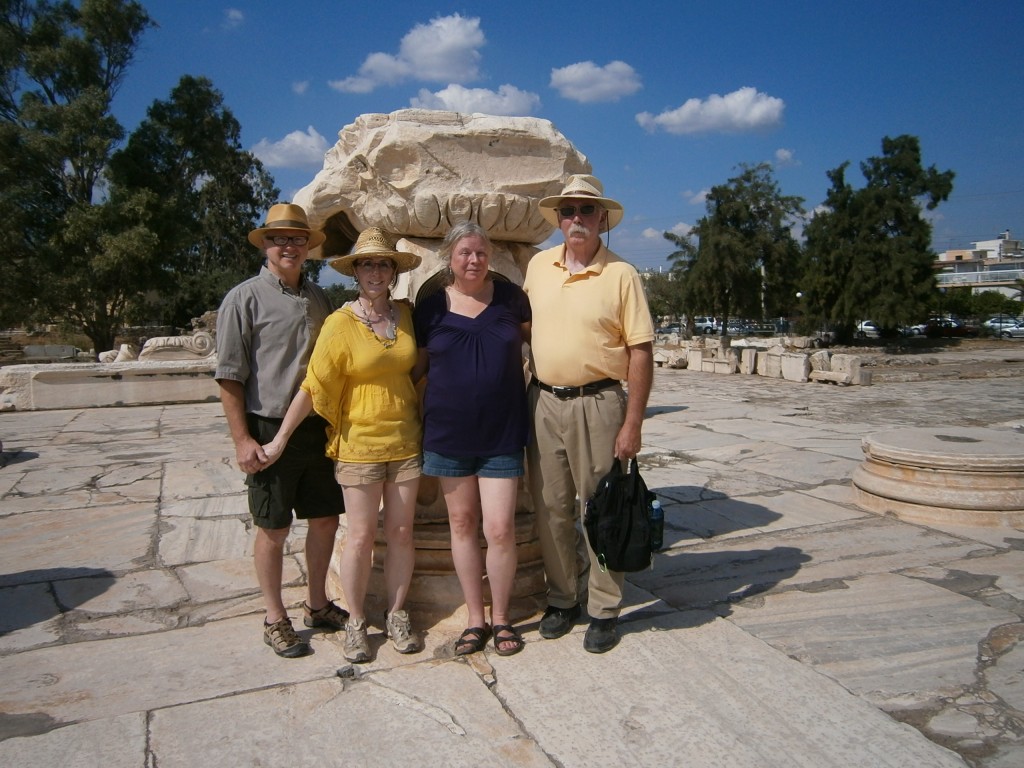
The smaller gate with three entryways that’s closer to the temple is the Small Propylaia, built around 50BCE
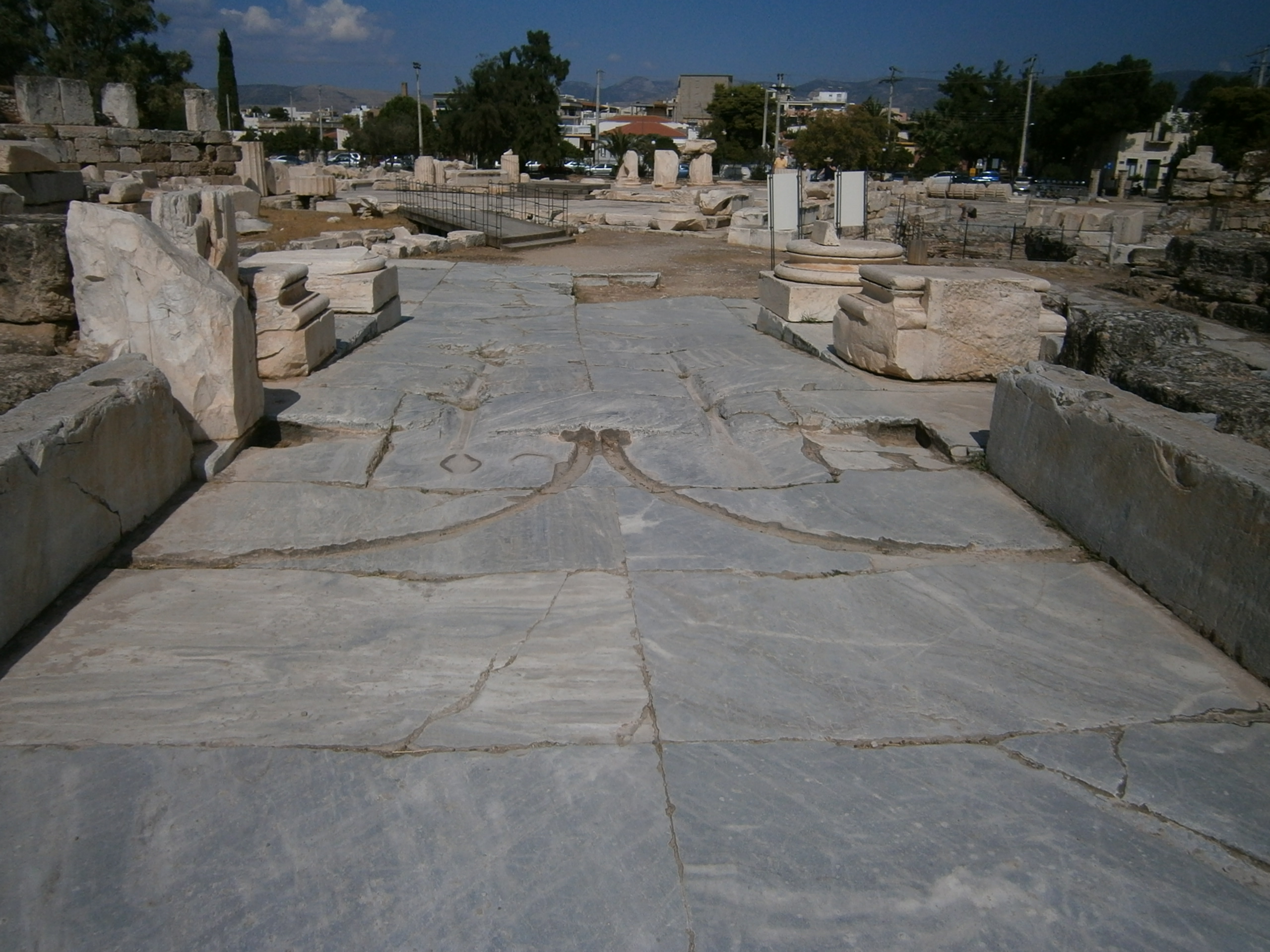
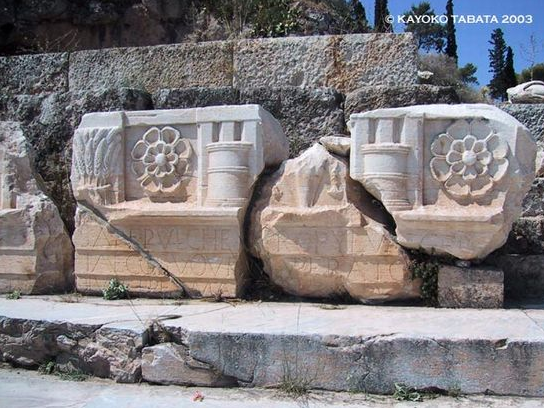
In the site museum, which is quite nice, there is a statue of a woman with what looks like it might be a basket on her head. But this wasn’t just any woman. When I looked up into her eyes, may heart raced and I was transfixed. The sign at the base of the statue was surely wrong. This couldn’t be a caryatid from the Small Propylaia. She was nothing like the sweet maidens that support the roof of the Erechtheion in the Acropolis. She felt solid and strong, and the air around her vibrated with power. This had to be a statue of Demeter herself. The sign also said that she was one of two caryatids, but other was lost.
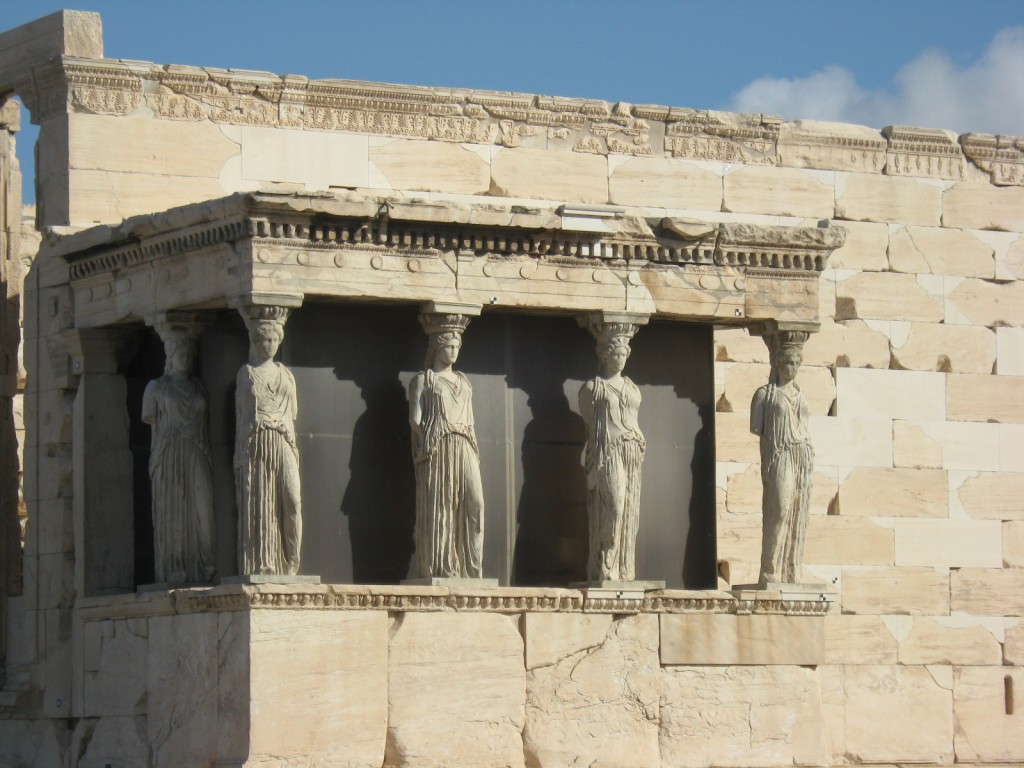

Which brings me to the following story:
As I was researching the Elefsina posts I came upon matt barrett’s Athens Survival Guide and a fascinating entry entitled “The Curse of Eleusius”. It seems that around the beginning of the 19th century, the people of the lovely little town of Eleusius venerated a statue of a woman with a basket on her head. They believed that she was the source of the town’s fertility and good fortune. She was buried up to her neck, and they were sure that if she was ever removed from the earth the town would fall to ruin. Her name was St. Demitra, and the legend goes that an evil Turk stole her daughter away. The grieving mother moved heaven and earth and finally managed to bring her home.
Sound familiar?
A quick Internet search failed to come up with a St. Demitra, but the name Demitra did appear. It is the Greek pronunciation of Demeter.
A British antiquities collector, Professor Edward Daniel Clarke, fell in love with St. Dimitra. He had to have her. Since the Turks occupied Greece at this time, antiquities were cheap—if the proper authorities were bribed. Clarke gave the Governor a telescope and the statue was his. The people of Eleusis pleaded with him. If he took her away, the earth would no longer nourish the crops and they would starve. He, of course, ignored them and, after a monumental effort, managed to dig her out of the ground and get her on a ship to England. The people were sure the ship wouldn’t make it, and they were right. It sank. But the statue was somehow recovered and eventually donated to the Fitzwilliam Museum in Cambridge, England.
The next harvest in Eleusis was good, but the following year it was sparse and continued to get worse. A soap factory moved into town and provided jobs, but it also fouled the air and water. As the years went by Eleusis, the sacred city of Demeter, disintegrated into the dingy industrial nightmare of Elefsina.
So, is the legend true? Had the loss of its goddess/saint doomed the town? If the statue was, indeed, the twin to the one that zapped me in the Site Museum, I would have no trouble believing that it did.
This was one fact in the story that I could check. I e-mailed the Fitzwilliam Museum and asked if they had a caryatid from Eleusis, and included a link to “The Curse of Eleusis”. Two days later I received a reply from Dr. Sally-Ann Ashton, Senior Assistant Keeper. Yes they had it, and she provided me with a link to its provenance and pictures in their database. It was indeed donated by Edward Daniel Clarke in 1865, and yes, it was the twin of the statue in Elefsina, although much more worn. If it carried the same power, I could understand, if not condone, Clarke’s theft.
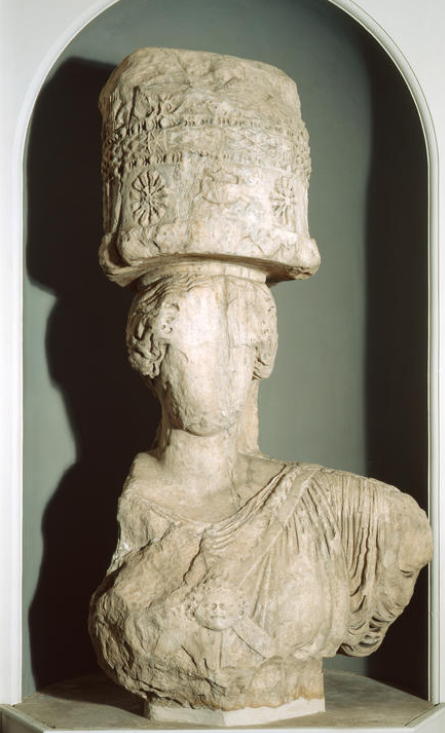
But the Temple of Demeter itself is, as far as I could sense, simply the ruins of a temple.
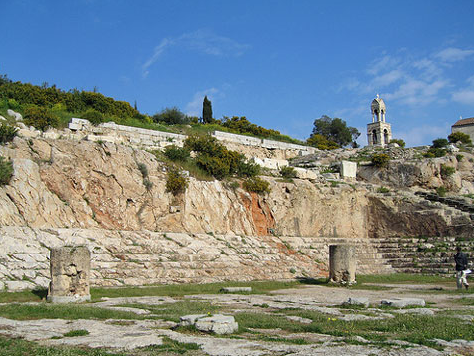
No trace remains of the powerful rituals that were done there for nearly 1500 years. And this makes total sense. I have no doubt that when the Roman emperor Theodosius I closed the pagan sanctuaries by decree in 392 AD, the priestesses of the Temple of Demeter decommissioned it in much the same way that the Roman Catholic Church decommissions sacred properties that it sells or puts to secular use. They would have bid a tearful farewell to the goddess, released all the spirits and daemons of the place, banished any remaining psychic energy, and retuned the vibes to “normal”.
But they forgot the two Demeters at the gate who had stood for centuries, welcoming initiates into the Mysteries.
To be continued…


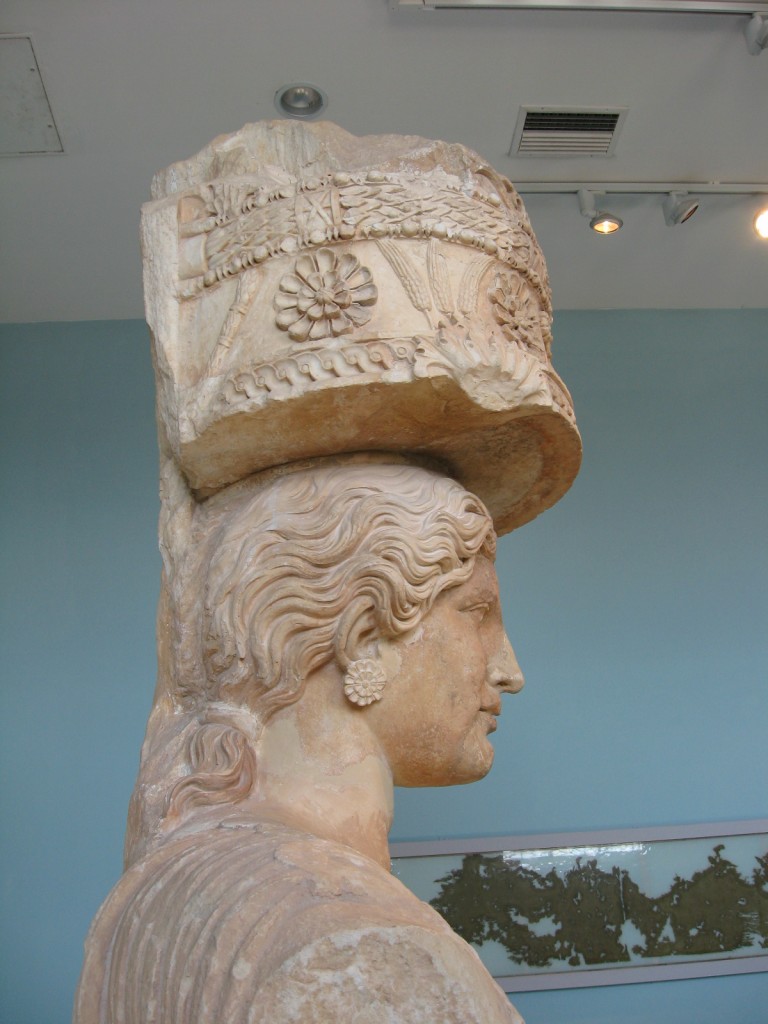
8 thoughts on “The Temple of Demeter and The Curse of Eleusis”
This looks interesting. Thanks for the suggestion.
thanks for the story! I’m inspired to save her & mother earth now!
you say:
“To be continued…” did you ever go on?
You are so welcome! Working with and for Mamma is good–not only for her but for you.
She rewards you in many unexpected and subtle (and not-so-subtle) ways.
I did go on.
If you go to my website and click “Blog” on the menu bar, all my blog posts will come up. On the right side of the page, part way down there is a box that says “search this site”. Type in “Elefsina” and everything I’ve written about Elefsina will come up.
Best regards…
Don’t know how I missed this comment! Just noticed it as I was replying to another one.
Thank you for your kind words. I’m so glad my site has touched your heart.
Could you reply with a link to the map? I need to cite it for my senior seminar. Also, very nice job! I love the website and writing.
If I didn’t give a link or credit it means I couldn’t find one.
If you google “site plan of Eleusis” all kinds of maps pop up.
here is a link to one: http://www.planetware.com/greece/athens-surroundings-gr-ath-aths.htm
Hope this helps.